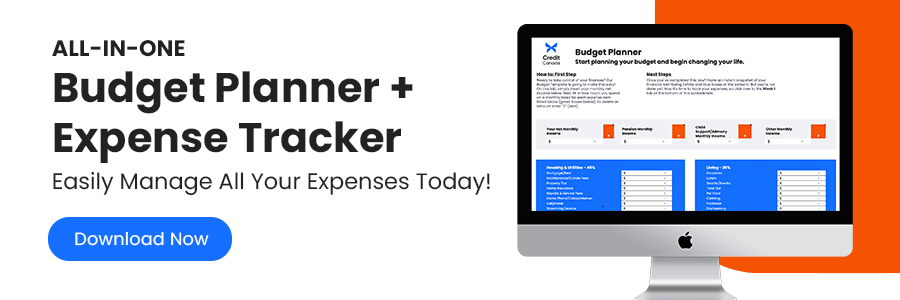
“Budgets? We don’t need no stinkin' budgets!” This (modified) line from the 1948 film The Treasure of the Sierra Madre sums up how many people feel about budgets. Unfortunately, this way of thinking can lead people down a dangerous financial path, if they’re not already walking it. But budgeting doesn’t have to be a burden, and in fact it can be extremely beneficial and for the most part, painless.
A budget helps you to see where your money goes and areas where you can cut back to save. It also promotes communication and teamwork between spouses and partners, and it can help you pay down debt faster. But for a budget to be truly useful, it helps to break down expenses into four categories. Here’s a look at each category, along with some eye-opening figures from a published report on annual Canadian household spending by category.
Top 4 Monthly Budget Planner Categories
Housing Expenses
They say home is where the heart is. It’s also where a lot of our monthly income goes! Whether it's rent, mortgage payments, taxes and/or insurance, leasing or owning a place can be costly. In fact, in 2016 the average Canadian was spending just over $18,000 on housing per year, or about $1,500 per month. Factor in household utilities, such as hydro, cable, internet, and phone, and you’re looking at another $4,700 per year, or roughly $400 a month.
The good news is that with a budget planner, you can begin to look for ways to cut back. Obviously you can’t lower your rent (unless you have some fabulous negotiation skills!) but you could look for a less expensive rental, or consider getting a roommate to help cover the rent. Or if you have a mortgage, perhaps you could refinance your home and obtain a lower mortgage rate.
The planner also lets you see other potential cuts you can make that can be fairly easy for you to do. For example, you may want to consider:
-
Turning the heat down a few degrees over winter and instead use an extra blanket on your bed.
-
Eliminate some pay cable channels or just use your streaming service.
-
Negotiate a better cell phone and/or data plan.
Living Expenses
Another category full of high-cost items are your living expenses, which includes things like food and clothing. In fact, in 2016 the average Canadian was spending about $8,800 a year on food (or about $730 per month) and another $3,400 on clothing. Luckily, there are tons of money-saving opportunities in these two areas.
For one, we can all easily cut back on dining out and purchasing prepared meals. Canada’s Food Price Report indicated that throughout 2018, we saw a 59% increase in food costs related to eating out and prepared food—about $210 per person. You can also save a bundle at the grocery store by switching up brand name items for generic or private label offerings. Finance expert Dave Ramsey crunched the numbers for you, and his research reveals that you may be able to save about $80 per month by making the switch. And really, is there that much difference between brand and non-brand items, taste-wise?
Canadians looking to save can take a similar approach when it comes to clothing by giving up the expensive brand names. We know this can be difficult if you have teens or young children (thanks to poverty shaming at schools), so if you absolutely can’t live without the right label, consider shopping at outlet stores, secondhand thrift shops in or around affluent neighbourhoods, or look for gently-worn items online. The truth is we only use about 20% of our wardrobe on a regular basis, so cutting clothing costs can be fairly easy if you just focus on must-haves.
Personal Expenses
While you’ll find some miscellaneous items included in this category, this is generally considered the “fun” category as it includes recreation and entertainment. And Canadians like to have a good time! We drop about $6,000 big ones in this category per year—that’s about $500 a month. Short of taking away the kids’ allowance or cutting your own hair, there are a few questions you can ask yourself to cut back on spending in this category, such as:
-
Can I give up going out a night or two a month?
-
Can I quit, or at least cut back on, smoking and/or drinking?
-
Can I give myself my own mani/pedis?
-
Do I really need this music streaming app, or is the free version enough?
-
Am I really using this gym membership?
Work Expenses
The smallest of our four categories, work expenses includes things like the cost of transit, lunches, snack breaks, daycare, and work clothing. As with every other category, there are always ways to cut back, whether it's carpooling with co-workers, filling a thermos with coffee, packing a lunch or splitting nanny costs with your neighbours.
If budgeting still sounds intimidating, don't you worry! We’ve created a free Budget Planner to get you started! All four categories are laid out and broken up into various expenses. All you need to do is plug in some numbers, and the Planner lets you see where you stand financially. Maybe you’re in better shape than you think, or maybe there are some gaps in your budget that need filling. If that’s the case, our certified credit counsellors are here to help. All of our counselling is 100% free, confidential, and non-judgmental, so don’t hesitate to call us at 1.800.267.2272.

Frequently Asked Questions
Have a question? We are here to help.
What is a Debt Consolidation Program?
A Debt Consolidation Program (DCP) is an arrangement made between your creditors and a non-profit credit counselling agency. Working with a reputable, non-profit credit counselling agency means a certified Credit Counsellor will negotiate with your creditors on your behalf to drop the interest on your unsecured debts, while also rounding up all your unsecured debts into a single, lower monthly payment. In Canada’s provinces, such as Ontario, these debt payment programs lead to faster debt relief!
Can I enter a Debt Consolidation Program with bad credit?
Yes, you can sign up for a DCP even if you have bad credit. Your credit score will not impact your ability to get debt help through a DCP. Bad credit can, however, impact your ability to get a debt consolidation loan.
Do I have to give up my credit cards in a Debt Consolidation Program?
Will Debt Consolidation hurt my credit score?
Most people entering a DCP already have a low credit score. While a DCP could lower your credit score at first, in the long run, if you keep up with the program and make your monthly payments on time as agreed, your credit score will eventually improve.
Can you get out of a Debt Consolidation Program?
Anyone who signs up for a DCP must sign an agreement; however, it's completely voluntary and any time a client wants to leave the Program they can. Once a client has left the Program, they will have to deal with their creditors and collectors directly, and if their Counsellor negotiated interest relief and lower monthly payments, in most cases, these would no longer be an option for the client.







